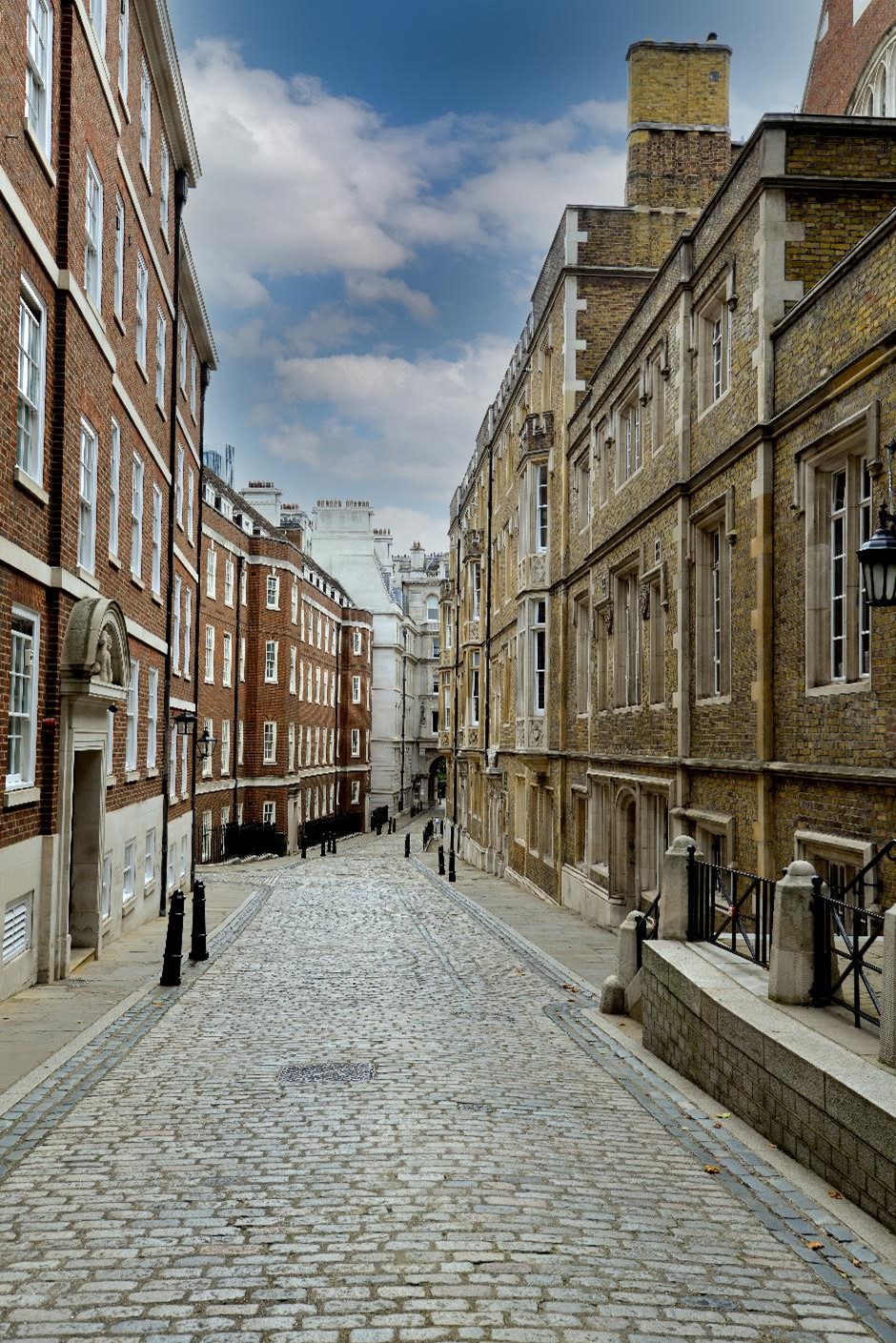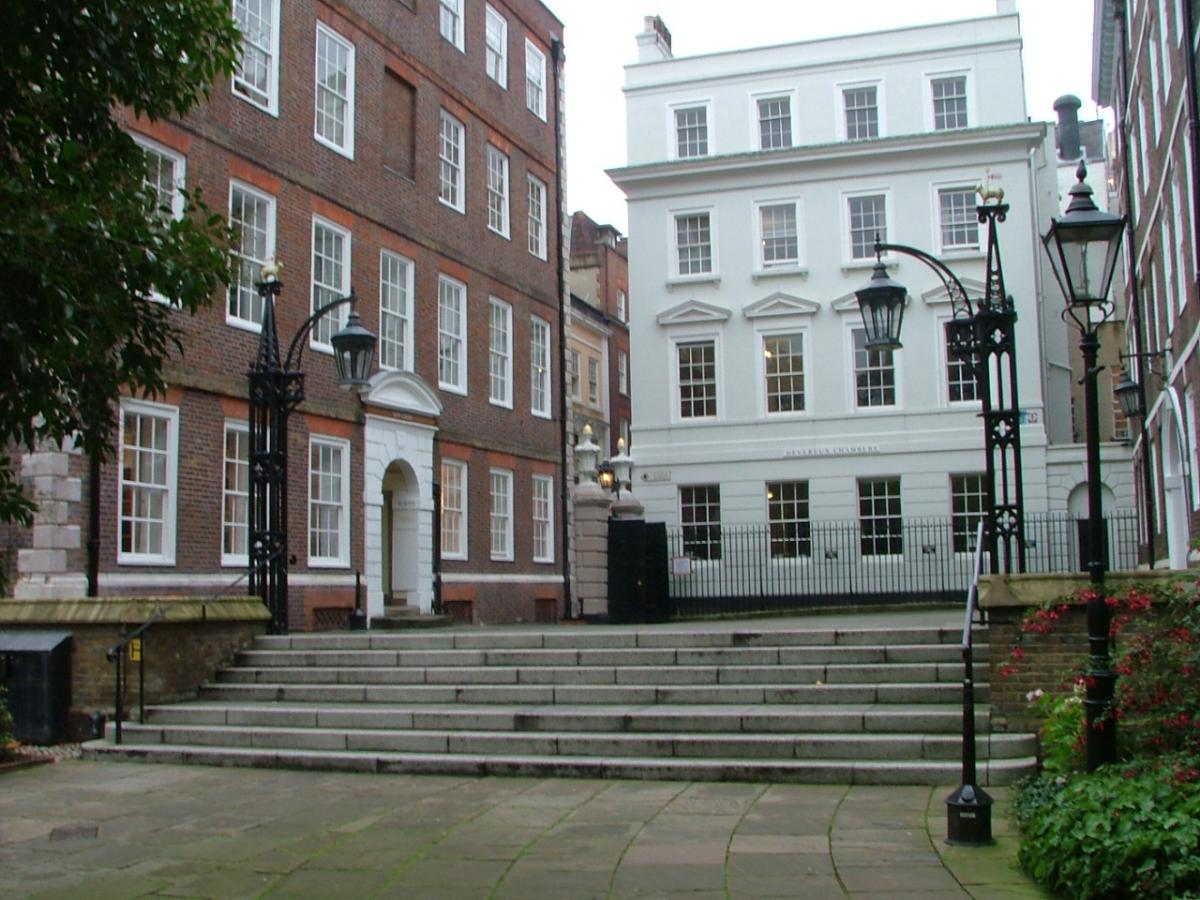
The Estates Department is responsible for the maintenance, management and strategic development of Middle Temple’s historic estate. The Estates Office is located on site in Carpmael Building. Please see Contact details for further information.
Located principally within the City of London, the site known as ‘The Temple’ is jointly held by the Honourable Societies of Middle and Inner Temple under Letters Patent granted by James I in 1608. Please see History under About Us for more detail.
Since 1608, Middle Temple has expanded its holdings to include property on the Western boundary of ‘The Temple’ lying just within the boundary of the City of Westminster.
Middle Temple’s estate now comprises 43 buildings set around formal gardens and courtyards, with a total site area of some 24,300m². The majority of the buildings are listed and the site is designated as a conservation area.
The maintenance and upkeep of Temple Church, which is jointly owned with Inner Temple, also falls within the responsibility of Middle Temple’s Estates Department.
The Estates Department is responsible for:
- Strategic planning and development of the Estate.
- Property Acquisitions and Capital building projects.
- Planned maintenance, refurbishment projects and minor works.
- Reactive maintenance controlled through a Help Desk system.
- Services infrastructure except IT, Telecoms and Audio Visual equipment.
- All Landlord and Tenants matters.
- Security and Car Parking.
- Refuse collections and Recycling.
- Health and Safety.
- Upkeep of the building fabric, fittings and services infrastructure of Temple Church.
The Buildings

Middle Temple’s buildings are an interesting mix of differing ages, architectural styles and construction methods. Located around open courtyards and gardens, they create a peaceful oasis from the hustle and bustle of the surrounding city.
A large part of the Inn’s estate is held under ‘Letters Patent’ granted by James I in 1608, although since that date we have acquired a number of freehold properties, principally along our north and west site boundaries.
Many of our 43 buildings are listed Grade I, II* and II with the whole site designated as a Conservation area. The Temple is a gated community with the external gates locked at night, over weekends and on Bank and Public Holidays. All of the roadways, courtyards and gardens are private land over which there is no Public Right of Way.
The Inn suffered heavily from enemy bombing during World War II with the result that a number of the buildings you see today are of post war construction. None the less, they were designed with such care and attention by the architect, Sir Edward Maufe, that the casual observer will not immediately distinguish them. Luckily, Middle Temple Hall, completed in 1573, escaped significant damage and remains one of the most magnificent original examples of an Elizabethan banqueting Hall with double hammer-beam roof
The following table provides brief information about the Inn’s buildings and this will be expanded in due course to provide a more detailed description and history of each property.
BUILDING | BUILT | ARCHITECT | LISTED |
Ashley Building | 1958 | Sir Edward Maufe | No |
Blackstone House | 1953 | Unknown | No |
1 Brick Court | 1908 | Walding and Sir Aston Webb | II |
4 Brick Court | 1882 | J.P. St. Aubyn | No |
Burnton Buildings | 1885 | R.W. Edis | II* |
Carpmael Building | 1955 | Sir Edward Maufe | No |
Cloisters | 1952 | Sir Edward Maufe | No |
Devereux Chambers | 1790 | Nicholas Barbon | II |
9 Devereux Court | 1952 | Unknown | No |
1 Essex Court | 1685 | Nicholas Barbon | I |
2 Essex Court | 1677 | Nicholas Barbon | I |
3 Essex Court | 1677 | Nicholas Barbon | I |
4 Essex Court | 1720 | Unknown | II* |
4a Essex Court | 1930 | Clyde Young | No |
5 Essex Court | 1882 | J.P. St. Aubyn | No |
35 Essex Street | 1675 | Nicholas Barbon | II |
Fountain Court | 1675-1880 | Nicholas Barbon | I |
1 Garden Court | 1884 | J.P. St. Aubyn | II |
2 Garden Court | 1884 | J.P. St. Aubyn | II |
Goldsmith Building | 1861 | J.P. St. Aubyn | II |
Lamb Building | 1954 | Sir Edward Maufe | No |
Middle Temple Hall | 1573 | Carpenter ‘Lewis’ | I |
1 Middle Temple Lane | 1684 | Unknown | II* |
1a Middle Temple Lane | 1684 | Roger North | I & II* |
1b Middle Temple Lane | 1693 | Unknown | I |
2 Middle Temple Lane | 1693 | Unknown | II* |
3 Middle Temple Lane | 1680 | Unknown | II* |
4 Middle Temple Lane | 1780 | Unknown | II* |
New Court | 1676 | Nicholas Barbon | I |
1 Plowden Buildings | 1831 | Henry Hakewill and James Savage | No |
2 Plowden Buildings | 1831 | Henry Hakewill and James Savage | No |
1 Pump Court | 1952 | Sir Edward Maufe | No |
2 Pump Court | 1952 | Sir Edward Maufe | No |
3 Pump Court | 1952 | Sir Edward Maufe | No |
4 Pump Court | 1952 | Sir Edward Maufe | No |
4 Pump Court (North) | 1686 | Unknown | I |
5 Pump Court | 1686 | Unknown | I |
6 Pump Court | 1686 | Unknown | I |
Queen Elizabeth Building | 1959 | Sir Edward Maufe | No |
3 Temple Gardens | 1878 | E.M. Barry | II |